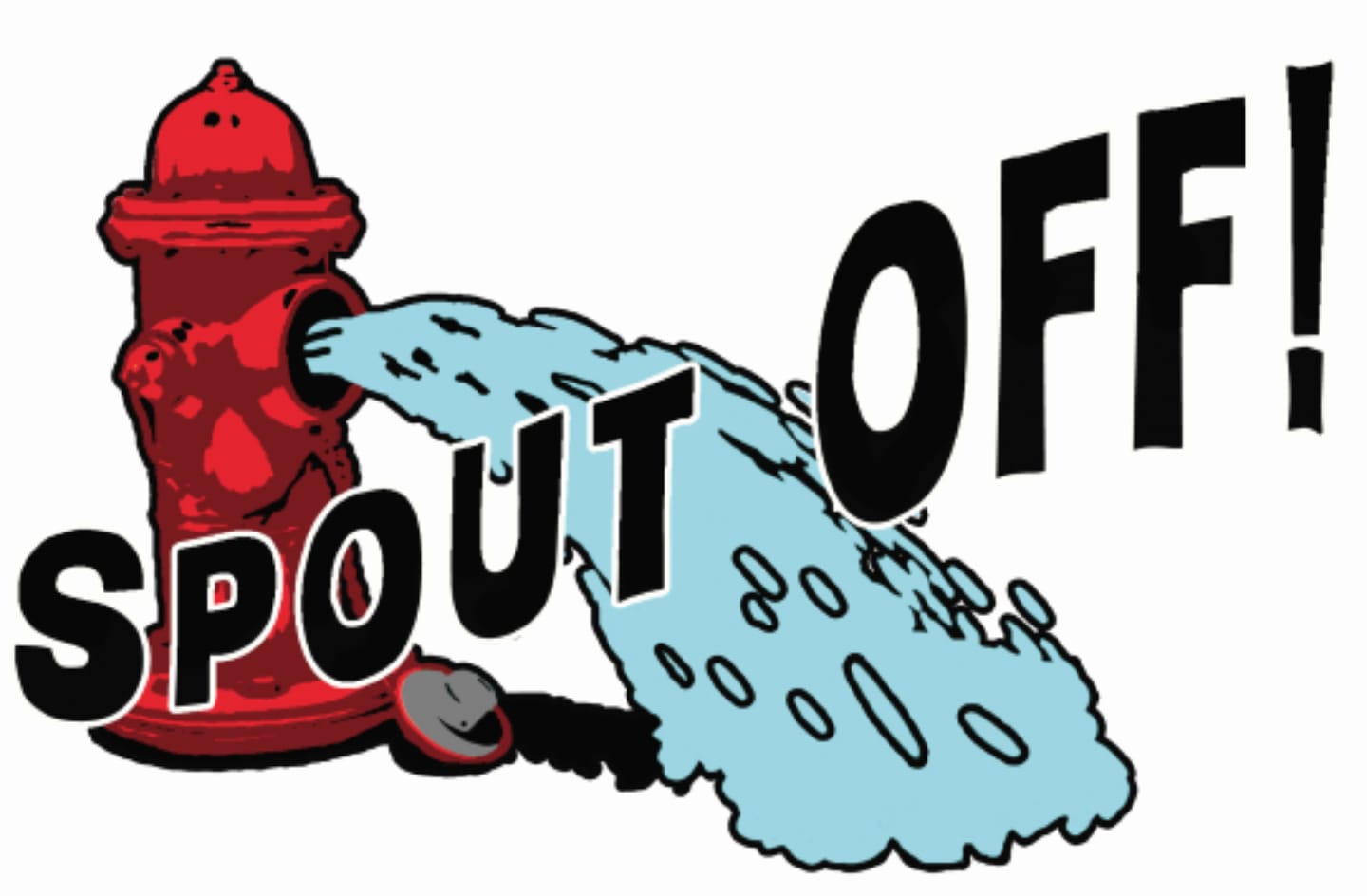
Santa Rosa County Public Information Officer Brandi Bates wrote the following research paper entitled “Trolls and Their Toll on the Social Media Bridge of Communications.”
“The paper was from my three week FEMA Master PIO course,” Bates said, noting FEMA paid for flights, bus and lodging. Bates, however, admitted she was on the county clock during the course.
Trolls and Their Toll on the Social Media Bridge of Communications
Brandi Bates Whitehurst
Santa Rosa County Public Information Office
August 30, 2019
2
Abstract
Social media has come to serve as one of the most effective communication platforms for
those in public information, engaging large numbers of followers rapidly. With only a cellphone
and internet access, a public information officer can get a message to thousands of social media
followers in minutes, and through organic shares and retweets, potentially millions in a matter of
days. This powerful medium, however, is a double-edged sword. As rapidly and widely as a
well-crafted post can spread a positive message, a destructive or untrue comment from a troll can
quickly send a negative message to the same audience. At their best, trolls can annoy followers
or cause confusion in messaging; at their worst, they can damage the public’s trust or kill an
agency’s creditability. (SIC) The social media world is still developing. Despite the destruction a troll
can yield, few solid defense tactics are available for combatting (SIC) them. A survey of 150 public
information officers from throughout the country was developed for this paper to share how
trolls have affected the ability to distribute information to the public, and to share tactics for
mitigating against the damage they can cause. Social media is too essential not to use, too
potentially explosive not to monitor constantly, and evolves too quickly to develop lasting
failsafe guidelines on moderation. The social media manager for a public agency must
continually work to build and preserve a supportive online community, while maintaining a
vigilant guard against negativity.
Keywords: troll, social media, Facebook, Twitter, public information officer (PIO)
3
Introduction
Social media is fast, cheap, easy, engaging, measurable, effective, and highly interactive.
Supportive social media followers can assist an official agency with dissemination of their
message exponentially by sharing posts with their friends and followers, but this valuable benefit
is not without its risks (Destiny & Asude, 2018). Social media may serve well as a bridge of
communications between official agencies and the public they serve, but predators lurk under
that bridge in the form of trolls.
Trolls are identified as those who exhibit antisocial behavior using aggression and
deception in an online forum to cause conflict and disruption (Cheng, Bernstein, Danescu
Niculescu-Mizil, & Leskovec, 2017). Trolls come in many different forms, but the goal of all
trolls is to wreak havoc on the creator of the post and any supporters. Most all social media users
have witnessed how quickly a seemingly innocuous post can go down in flames under the attack
of a troll or trolls. Moderators have few tools available to help manage comments and the
uniqueness of each post makes setting definite rules impractical.
Researching the reasons some people find pleasure in trolling because intriguing after
personally being targeted on social media while serving in an official capacity. This work
attempts to give a better understanding of the troll, as well as share tactics utilized by public
information officers (PIOs) to mitigate against them. Method Part of this research was conducted via a review of previously existing studies as to why
persons are inclined to troll on social media. Additionally, a qualitative survey was developed,
PIO and Social Media Trolls, to collect current data specifically for this research paper (see
Appendix: PIOs and Social Media Trolls survey), querying current public information officers
4
on their use of social media and how they mitigate the damage trolls can cause. Social media
may be ever-changing, but it is growing daily and here to stay. Honing the skills to best manage
online forums for public agencies is critical for the PIO.
Literature Review The literature review for this paper was conducted between April and August of 2019,
using Google Scholar and references from several of the articles retrieved in this search process.
All articles with exception of one were restricted to publication within the last five years. One
well-researched article by John Sular, PhD, The Online Disinhibition Effect (2004), which was
referenced by several of the more recent publications for the description of the behavior in which
people will say or do something online that normally they would never say or do in person, was
included as the information was determined to be of better quality than any written since that
time. A total of 11 articles were reviewed and analyzed and a determination was made to use
only seven for this research.
Evita March, PhD and Jessica Marrington, PhD’s A Qualitative Analysis of Internet
Trolling (2019) revealed findings from a study of 379 survey participants from March and
Marrington’s community. The participants were asked to give their definitions of trolling, to
describe the behaviors they felt constituted trolling, and asked if trolling differed from
cyberbullying. Their survey also studied if the participants had ever been trolled and how that
felt to them.
Barbara Lopes and Hui Yu’s Who Do You Troll and Why: An Investigation Into the
Relationship Between the Dark Triad Personalities and Online Trolling Behaviors Towards
Popular and Less Popular Facebook Profiles (2017) studied 135 participants. The study group
5
comprised of students from a university, reviewed fake social media profiles and were asked to
compare themselves to the fake profile as well as give feedback on some fictional trolling
comments posted to the fabricated accounts. Their research indicated that trolls showed
psychopathic tendencies.
In Claire Wolfe’s Online Trolls, Journalists and Freedom of Speech: Are the Bullies
Taking Over? (2019) as well as her article Democracy Under Threat? Journalists Need Help in
Handling Internet Trolls (2018), she studied the challenges facing journalists as they engaged
with their readers. Wolfe’s research in both articles included interviews with new and
experienced journalists as well as journalism students. Her findings showed many writers were
pressured to create and maintain an online presence with their readers, but were often ill
equipped to respond to the onslaught of troll attacks.
Cheng et al.’s Anyone Can Become a Troll: Causes of Trolling Behavior in Online
Discussions (2019) was a fascinating read, suggesting that mood and exposure to previous
trolling behavior by others could influence an otherwise ordinary social media user to behave in
a troll-like manner. Their findings were based on an experiment of a simulated online discussion
with paid participants from the United States using Amazon Mechanical Turk, a crowdsourcing
marketplace. The research they conducted even suggested that trolling behavior, like yawning,
can be contagious and spread from user to user.
Finally, Destiny, and Asude’s Social Media and Crisis Management: A Review and
Analysis of Existing Studies (2018) detailed the pros and cons of social media in crisis
management. Their findings showed strong evidence that social media worked well for creating
awareness and disseminating information to the public. However, they warned that just as
quickly, negative messages can be distributed and cautioned practitioners to have a thorough
6
working knowledge of the different social media platforms and how to best use it to
communicate with their followers.
Plan of Action To study the challenges trolls can bring to an agency, a 12-question qualitative survey
was developed online in SurveyMonkey and distributed to 150 PIOs. The survey pool was
solicited from students of the Federal Emergency Management Agency’s (FEMA) Master Public
Information Officer Programs (Cohort 3), FEMA’s Advanced Public Information Officer
Program (May 2017), members of the National Information Officers Association Facebook
Group, and members of the Government in Social Media Conference Official Facebook Group.
Survey respondents were asked demographical (SIC) questions about their experience, agency type,
level of support from team members as well as their supervisors, as well as number and type of
social media accounts managed. They were further queried regarding strategies for managing
negative posts, the negative impact trolls had made on their ability to distribute information to
the public, the use of archiving services, social media policies, as well as offered the opportunity
to provide additional comments.
In retrospect, several of the questions could have been formatted to a multiple-response
question style to give respondents an opportunity to select specific answers pertinent to their
knowledge and experiences, in addition to the selection of “other” with a comments section to
populate. Pertinent questions in this survey did, however, offer an opportunity for the respondent
to select “other” and leave comments. Additionally, a question regarding how much time each
PIO spends monitoring comments during “blue skies” or typical day-to-day operations, as well
7
as a “grey skies” incident, such as hurricane response, would have been valuable for providing
research needed to create better staffing policies in the profession.
Results Social Media is Critical for Public Agencies Social media is a highly valuable tool for the PIO, for both awareness and crisis
communications, given its capacity to correct misinformation, answer questions from the public,
and share information faster than traditional media or email at little to no cost. Social media has
enhanced crisis communication, transforming the usual one-way message delivery to more
dynamic two-way conversations directly with the public (Destiny & Asude, 2018). A survey
respondent who works as the PIO for a local municipality explained:
The importance of social media became clear in 2012 when we had a wildfire. A nearby
town evacuated to our town and then we lost power for 10 days. Social media became the
best way to get info out to locals and family members of those who had been evacuated
(Appendix: PIOs and Social Media Trolls survey).
Social Media is Challenging for Public Agencies The PIOs surveyed managed an average of 3.57 social media accounts including
Facebook, Twitter, Instagram, Nextdoor, LinkedIn, and SnapChat (see Table 1 for PIOs and
Social Media Trolls survey results regarding social media accounts managed). Managing trolls
on multiple social media sites and mitigating the damage they can cause to an agency’s brand
weigh heavily on the often overloaded shoulders of the PIO. Unlike local office hours which
8
close to give employees much needed respite, social media is open 24 hours a day, and
accessible from cars to couches all around the world.
Social media moderation takes its toll; in time, in money, and in stress. In the research of
trolls and the emotional pain they inflicted on journalists, troll-pummeled writers who opted to
stay in the game learned to fight back or self-censor their writing to be less troll-provoking,
while others chose rather to leave the field altogether (Wolfe 2018). Some media outlets chose to
restrict commenting or simply removed their comments sections due to the high cost of constant
moderation. Recommendations from Wolfe’s research were to disengage from the troll; while
thoughtful journalism often does and should bring about healthy debate, some people only want
to argue. As the old adage goes, “Don’t wrestle with a pig. You both get dirty and the pig loves
it.”
Social media managers of multi-faceted agencies need the support of their colleagues to
successfully build and maintain a healthy online community, but the dark side of social media
can turn many vital resources off. A PIO who manages social media for a local municipality
commented:
We’re working to convince other department heads how valuable social media is for
being transparent with our citizens, but trolls play a huge role in us being able to
convince them. They feel like it causes more work for them and/or that social media
‘only brings out the nay-sayers’ (Appendix: PIOs and Social Media Trolls survey).
Support of upper management is just as important, and that support starts with
understanding of the positives as well as the perils of policing decorum in a public media forum.
A PIO who serves a local municipality including fire and law enforcement stated:
9
I think having public administrators who at least somewhat understand social media
would help all of us put more productive tools and policies into place. This is a huge
detriment to the effectiveness of the position I hold as well as many others I’ve spoken to
who are operating in similar environments (Appendix: PIOs and Social Media Trolls
survey).
What Makes a Troll? What brings out the troll in a person? The “online disinhibition effect” popularized by
psychologist John Suler (2004) details how social media can expose different sides of people. On
the positive side, the effect can give the introverted the courage to share thoughtful feedback in a
public forum. Conversely, it can encourage outrageous opinions one would never say in person.
Most people have a friend or agreeable coworker who is typically quiet in person, but unveils a
comedically snarky, less reserved side on social media. Take that same disinhibition effect, apply
it to someone who is not pleasant by nature, and give him or her a social media forum to
terrorize; now one has a user with a black belt in snarky, also known as the keyboard ninja.
Why Do Trolls Troll? Lopes and Yu characterize trolls as psychopathic in Who Do You Troll and Why: An
Investigation Into the Relationship Between the Dark Triad Personalities and Online Trolling
Behaviors Towards Popular and Less Popular Facebook Profiles (2017), while March and
Marrington went so far as to describe trolls as sadists in A Qualitative Analysis of Internet
Trolling (2019). According to Cheng et al. (2017), trolls think they are funny, often feel they are
smarter than others, and sometimes troll simply because they are bored. Trolling victims don’t
10
think they are funny at all and reported feelings that range from being frustrated or troubled to
incensed. (1) In some more extreme cases of trolling, the creators of a post have been “doxxed,” a
trolling practice by which the victim had his or her personal details, including address, cell phone
number, email, etc. posted online (Wolfe, 2019).
In further studies by Cheng et al. (2017), trolling was found more often at night when
people are tired, and more likely on Mondays than Fridays because almost no one likes
Mondays. External negative factors can also play a role in the rousing of a troll. Thus posting
information that is critical but not especially pleasing to the public, such as an unexpected
closure of a well-traveled road or popular public service, on Monday evenings during a heat
wave, blizzard, or power outage would be expected to bring out the trolls in droves.
What You Permit, You Promote Sometimes it’s the social media platform itself which can be a breeding ground for trolls.
The prevalence of unmitigated negative posts can set the mood for more negative posts, and sites
that develop a reputation of being routinely trolled are more inclined to stay that way. This is not
unlike the broken windows theory introduced by Wilson and Kelling (1982) which states that
visible signs of antisocial behavior and disorder begets more of the same. Consider a “Concerned
Citizens of (insert local community name here)” Facebook group. If one thinks of this group as a
virtual neighborhood and the negative posts as “broken windows,” a conclusion can be made that
seeing the negative posts by others encourages more negative posts (Cheng et al., 2017). Or, as
former President Theodore Roosevelt’s daughter, Alice Roosevelt Longworth, has been credited
as saying, “If you don’t have anything nice to say, come sit by me.”
11
How Trolls Affect What We Post Seventeen (11.33%) of the survey respondents from this study said trolls have affected
their ability to distribute information during an emergency. Ten (6.67%) stated they always or
usually choose a different method than social media for delivering certain messages because
moderation of a post on a topic would be too daunting, however in retrospect, this survey
question did not clarify that the social media post could be just one of the avenues of distribution.
Steering clear of controversial topics was listed as a tactic to avoid attracting trolls according to
survey respondents, showing the potential negative backlash from trolls does cause PIOs to give
pause before posting.
“The Antidote for Fifty Enemies is One Friend,” Aristotle Having loyal followers who can come to the support of an agency when negative
comments are posted is a suggested way to shut down trolls.
“Generally, I find other people will speak up for us,” said a respondent from the public
school system (Appendix: PIOs and Social Media Trolls survey).
“We have a pretty great fan base that will have our backs and say things we wish we
could say to a Negative Nancy,” added a PIO for a state agency (Appendix: PIOs and Social
Media Trolls survey).
One simple way to increase supportive followers to an agency page is to reach out to staff
and enlist their support. A PIO for a federal agency added “… we have enough of our own
employees who act as advocates and can help get the right answers to folks… Keeping a credible
presence helps build a crowd that can help” (Appendix: PIOs and Social Media Trolls survey).
12
Moderating Comments Several insightful and diplomatic options for handling negative comments were revealed
in the survey process. Many respondents use an online version of the same basic skill sets in
which PIOs have been trained for while working with the media. These skill sets include
maintaining professionalism, staying on message, and not engaging a negative conversation in a
public arena.
No survey respondent encouraged engaging in a continuing conversation with a troll,
however there were several recommendations to redirect negative conversations to an offline
format. “…If there is a direct question or chance to rectify false information, we respond to those
portions of the inflammatory comment. We do not continue going back and forth in an
argumentative manner. We opt to try to take comments ‘offline’ through direct message to our
page or by calling the office if they’d prefer. We do not delete comments and have hid few
beyond what is automatically hidden through profanity filters,” said a survey respondent from a
local municipality (Appendix: PIOs and Social Media Trolls survey).
Hiding comments, even if just until the post cools off, has been an effective tactic for
some PIOs. “Social media posts are a huge problem. However, we usually take the high road to
whatever is posted by thanking them for their comment and asking them to private message us or
contact us in person to discuss further. 95% of the time that usually ends it. In our case, 3% of
the time they call and 2% of the time they continue to post which is when we begin hiding their
posts. In our experience usually after we hide a few posts there is no further escalation,” stated a
PIO for a hospital in the survey (Appendix: PIOs and Social Media Trolls survey).
While deleting negative comments was an infrequent moderation tactic, the exception to
this, as one would expect, was life safety. “Our policy is going to be two attempts to correct or
13
inform the poster and then let the issue go. The only time this policy will change is in a declared
state of emergency and the troll is contradicting life safety information,” stated a PIO from a
local municipality.
The holy grail of responding to a negative post is to turn the situation into an opportunity
to educate the troll and the public. “If inflammatory comments are off topic, we delete them per
our provided policy. Response otherwise depends on the nature of the comment. We comment
publicly if it serves a greater good, and privately if it does not,” stated a PIO from a local
municipality.
A survey respondent from the health care industry added, “If it is a legitimate complaint,
we have a script ‘It sounds like we didn’t meet your expectations. Please call xxx-xxxx so that
we can address your complaint.’ In addition, if we have a real name, we have a process to
address with our Governance Risk and Compliance department. Ultimately, we’d like to be able
to evaluate complaints and exercise service recovery if possible (Appendix: PIOs and Social
Media Trolls survey).”
Banning Users Banning users was even less popular with survey respondents than deleting comments.
Survey research showed that more than two-thirds of PIOs erred on the side of caution when
deciding to ban a user – and many were advised by legal departments to do so. Several who had
banned users, or inherited banned users when they began managing social media for their
agencies, have since unbanned them.
14
To Post or Not to Post Each opportunity to craft a thoughtful, engaging post is like a deposit in the bank of
public trust, however a post that generates a negative reaction can bring about a significant
withdrawal. If each social media manager had a steady stream of positive posts to deposit, their
public trust account would stay soundly in the black but that is an option for few public agencies.
Unfortunately, in an effort to not arouse trolls, some PIOs are defaulting to using social
media to a lesser extent. Approximately one-third (31.34%) surveyed said they sometimes,
usually or always used a different platform than social media for messages that might be
challenging to moderate. “I strive to post content that isn’t that interesting… Try to have
bulletproof content when possible. We don’t talk about pending legislation,” said a survey
respondent with a federal agency (Appendix: PIOs and Social Media Trolls survey).
Regrettably, the threat of being trolled is at least occasionally the cause of missed
opportunities to get a message quickly and easily to the public. “There are some stories or
incidents we don’t publicize on Facebook, specifically, to avoid harsh/negative comments,”
added a survey respondent from a state or state agency (Appendix: PIOs and Social Media Trolls
survey).
Discussion The research conducted for this paper yielded interesting yet discouraging findings
regarding the causes of trolling behavior, many helpful encouraging tactics by which PIOs use to
mitigate against trolling damage, and some areas which need to be further addressed.
Remarkably, more than half of the PIOs surveyed did not have a professional social
media archiving service (Appendix: PIOs and Social Media Trolls survey). Several responded as
15
using screenshots for archiving, however, screenshots will miss comments to posts that are
deleted by the poster. In Florida, which has one of the country’s most stringent public records
laws, anything posted to the site is subject to public records request including comments by
others. As public sector agencies are obligated to maintain transparency, they don’t have the
luxury of deleting posts or comments despite how inappropriate they may be. Considering
followers can, at least on Facebook and Instagram, edit or delete their comments within seconds
of submitting them, an automatic archiving system offers a valuable service in retaining those
records even if they are deleted before the moderator is alerted they were posted. Having a
qualified archiving system offers the PIO an extra tool in the public records retention toolbox in
the event of litigation.
After a thorough analysis of the survey developed for this paper, several improvements
were made apparent. While a question was asked as to how many team members can check an
agency’s social media accounts, perhaps more importantly would have been a question regarding
how many hours a PIO works on his or her social media accounts outside traditional work hours.
The experience of this PIO is that monitoring social media is the first task done upon wakening
and the last done before sleep, every single day, with many quick checks throughout the day.
Helping leadership understand the time and energy required for monitoring and moderating a
platform that never sleeps is an important step in improving working conditions for the social
media manager. With every PIO surveyed having at least one social media account (Appendix:
PIOs and Social Media Trolls survey), additional research on best practices and staffing
optimization would be highly beneficial towards preventing burnout.
Currently, a keyword search of the word “troll” in the Facebook (Figure 1) and Twitter
(Figure 2) help centers render no results, although both have an option to report a comment for a
16
variety of issues. Expanding this research to study any advantages of using these reporting
services as well as any negative post alerting tools would be valuable to the social media
manager. Several survey respondents mentioned in follow-up conversations that they desired the
ability to edit posts on Twitter. Adding a question in the initial PIOs and Social Media Trolls
survey as to what editing or moderation tools the respondents would like to see developed would
be beneficial for this research.
Social media is constantly evolving. Developing a definitive set of legal guidelines for
the management of negative posts would not be easily done, but would offer better protection for
those who make the determinations on how to mitigate the damage of trolls, while still being
mindful of the citizens’ First Amendment rights. Additionally, a better understanding of social
media in general would be helpful for elected officials, policy makers, and leadership, suggested
more than one survey respondent.
Despite the risks of troll attacks, social media has been shown to be an invaluable tool for
disseminating public information. All of the PIOs surveyed use at least one agency social media
channel to deliver the right information to the right people at the right time (Appendix: PIOs and
Social Media Trolls survey). The social media manager of a public agency must endeavor to stay
abreast of the latest tools and best practices for using this communications bridge, all while
maintaining a watchful eye for the trolls who lurk beneath.





































